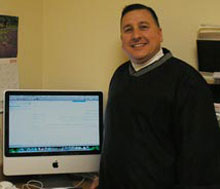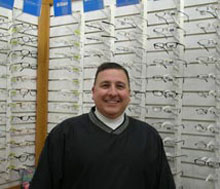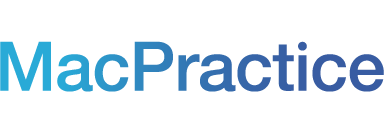Happy Clients
Roger Klassen, OD - Walmart Vision Center Eye Doctor
Sitting in my chair, I realized I was going to have to go electronic sooner rather than later. My friend Barrett and I were listening to John McGreal lecture at the Kansas Optometric Associations' Spring Convention. What he was saying rang true, and I had just been dragging my feet. The problems that I had yet to resolve were threefold. The first problem was conceptual. I knew what I wanted a software program to do; I am just not a programmer, and I didn't have any idea how to write a program to do what I wanted it to do. The second problem was that everyone I knew "tolerated" his or her software. They didn't "love" it. The third problem was cost.
Practice management systems are expensive, challenging, and companies seem to come and go. The bottom line for me was, what could I afford that was still going to be supported by a viable company in five years or longer?
The answer was MacPractice 20/20 by MacPractice Barrett actually deserves credit for finding this remarkable software written by a five-year-old company, backed by owners with up to 25 years of experience, located in Lincoln, NE. When I went to their website I registered to get a demo of their program. I systematically evaluated every module of the program. I was stunned! Here it was in a nutshell, all packaged up for me, it even came with a bow! There were a few exceptions, but this was THE program that I had conceptualized in my head.
I have now been using the program nearly six months. I still LOVE it!
Here are some of the reasons why I love MacPractice 20/20 so much:
- MacPractice is constantly developing their software. I have had three major updates since I initially received the software. The company doesn't rest on their laurels; they are constantly seeking to improve the program.
- eClaims are a cinch!
- The program can store and manage ancillary testing devices, i.e. visual fields, retinal camera pictures, etc.
- Users may now access MacPractice via a Windows machine using Aqua Connect.
- MacPractice is not loaded with a bunch of minutia that clogs up the software to "work more effectively" with third party interests such as Vision Service Plan.
- If the user does not want to use the provided templates, one can purchase the true EMR and develop all of your own forms and records.
- MacPractice provides you with many instructional videos on how to do this.
Technical support is just a "bubble" away. More specifically, MacPractice offers a unique way of contacting technical support. In the lower right hand corner of the screen is an empty speech bubble, like in the comic books. One can simply "pop the bubble" and a new screen appears in which suggestions or problems can be submitted. You can choose to receive answers via telephone or e-mail. If a problem is complex and cannot be solved by a simple answer then the screen-share ability is utilized and you can participate in the solution. I find that it is much easier to remember a solution if you are participating in finding it rather than simply having it handed to you on a silver platter. The beauty of this program is I can follow the logic. More often than not, if I get stuck, I think to myself "how would I have written the software?" and nine times out of 10 I can figure it out on my own.
I have to admit, if you have just begun the process of evaluating electronic medical record systems, it can by very overwhelming how powerful this software can be. Two things I want to leave you with. First, Dr. Kendall Krug, one of the initial users and a shareholder, told me, "I have hired many assistants over the years, and not one of them couldn't pick it (MacPractice) up." Secondly, my friend Barrett hired one of the best opticians I know, who has never used a Mac, and she has picked it up quite quickly and admits to loving it! Her specific comment was this; "Once I got past the fear of hurting it for messing it up it is really fun to use!" When was the last time you heard one of your colleagues or a staff member saying that?
Sincerely,
Roger Klassen, O.D.


